They are Australia’s most feared criminal enforcers, responsible for a trail of blood and bodies across Sydney streets.
The Hells Angels, Rebels, Comanchero, Bandidos, and Finks are among the most notorious – and dangerous – outlaw bikie gangs in the state.
We take a look at the deaths, feuds and bloodshed involving the gangs and – together with former NSW Police Detective and award-winning journalist and author Duncan McNab – rank the “big 10”.
McNab said of the 38 bikie gangs, the Hells Angels were the most dominant underworld force in NSW.
“For my money, top of the pile is Hells Angels (who) were the first global gang to come to Australia,” he said.
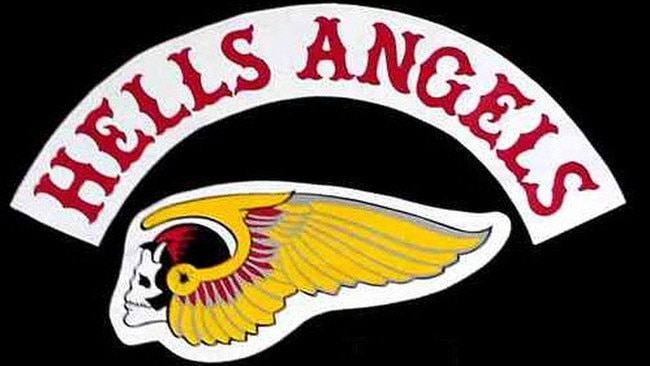
“They’ve been the dominant worldwide gang for years. I think they are still in that position.”
He credited the Hells Angels’ “stability of leadership” and chapter expansion for their rank.
“Years ago you’d never see a patch over in a bike gang. You’d rather die than be a patch over. It’s been happening more and more so the Hells Angels have been on the acquisition trail and that means they’re acquiring geographical turf,” he said.
“Hells Angels have been famous for generations at being brilliant at logistics. I think they’ve been the world’s strongest bike gang for decades and I don’t see that changing.”
McNab said the changing nature of bikie culture over the past 15 to 20 years had influenced the power and rank each club held, with “consistency of leadership, history of success and the current expansion” key criteria for a top-ranked club.
A bikie source said the top dog varied greatly from state to state, and the fight for dominance in NSW had changed in recent times.
“Until about six months ago you would have said the Comanchero were easily number one, but a lot of their money makers are now in jail so it brings the Hells Angels, Bandidos and Rebels a lot closer,” the source said.
“But in Adelaide for example the Descendants are really strong, over in Perth the Coffin Cheaters are big and then the Mongols run the Gold Coast, so it varies a lot.”
Top 10 most notorious bikie gangs in NSW
1. Hells Angels
First global gang to come to Australia, with current “strong” leadership and dominance worldwide. High-profile members include Jason Fahey and Angelo Pandeli.
Formed in Fontana California in 1948, the Hells Angels expanded to Australia in Sydney and Melbourne in 1974 before becoming arguably one of the most infamous clubs worldwide.
The club claims to operate 62 countries, with over 250 members across 14 chapters in Australia. It is understood the club is continuing to expand further across Victoria.
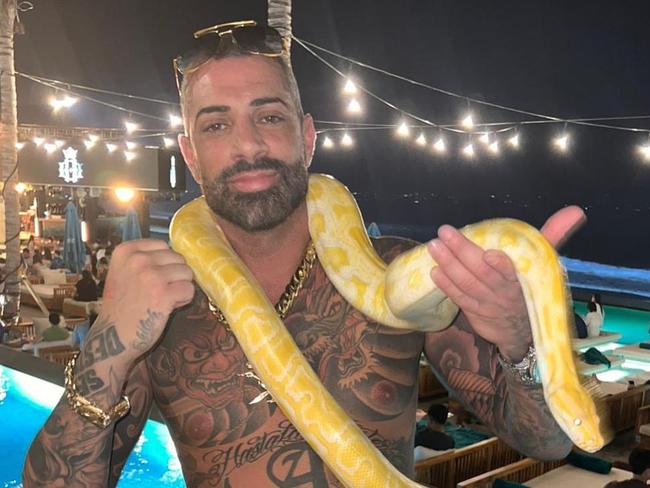
Members have been involved in all forms of crimes but largely drug distribution, arms trafficking and money laundering. In May, ex- Bandidos national president Jason Fahey shocked the underworld by “patching over” to rivals Hells Angels.
2. Rebels
The largest gang in Australia with almost half of all the bikies in the country. High-profile members include Alex Vella.
Founded in Brisbane in 1969, at its peak in Australia the club boasted over 70 chapters and 1000 members nationwide and it continues to remain the largest gang in Australia.
The club accounts for almost half of all bikies in the country.
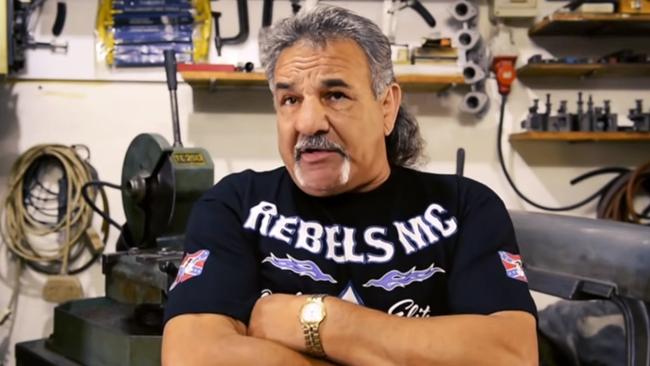
Its president Alex Vella was famously exiled to Malta. The Rebels are regarded as the only major home grown gang formed in Brisbane and the club established its first international chapter in 2011 in New Zealand.
3. Comanchero
Australia’s own homegrown gang, powerful and prominent across the country and growing worldwide. High-profile members include Allan Meehan, Mark Buddle and Tarek Zahed.
Formed in 1968 in Sydney by William “Jock” Ross, the Comanchero has roughly 1000 members across four main chapters. The club’s motto is ACCA, which stands for “Always Comanchero, Comanchero Always”.
Named after the John Wayne movie The Comanchero, the club saw a second breakaway chapter form in 1982 by Anthony “Snoddy” Spencer which later became the Bandidos’ first Australian chapter.
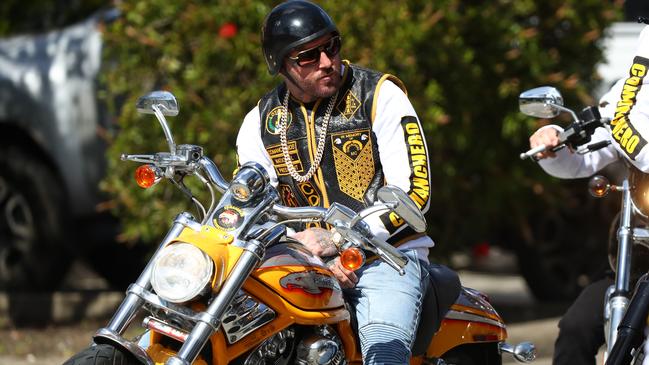
The club’s national president is Allan Meehan and its rivals include the Bandidos and Hells Angels.
Australia’s “most wanted bikie” and senior Comanchero figure Mark Buddle, faced court in February accused of conspiring to import a $40m cocaine shipment to Australia in 2021.
He was arrested in the self-declared republic of Northern Cyprus last year and extradited to Australia in August last year.
4. Bandidos
Regarded among the biggest clubs nationwide, with affiliates overseas. High-profile members include Jason Fahey (patched over to Hells Angels in 2023).
Formed in 1983 in Sydney after 11 of its original charter members split from the Comanchero MC due an ongoing rift between members.
Comanchero founder and president William “Jock” Ross was allegedly caught in a compromising position with another club member’s wife, causing disillusionment among members.
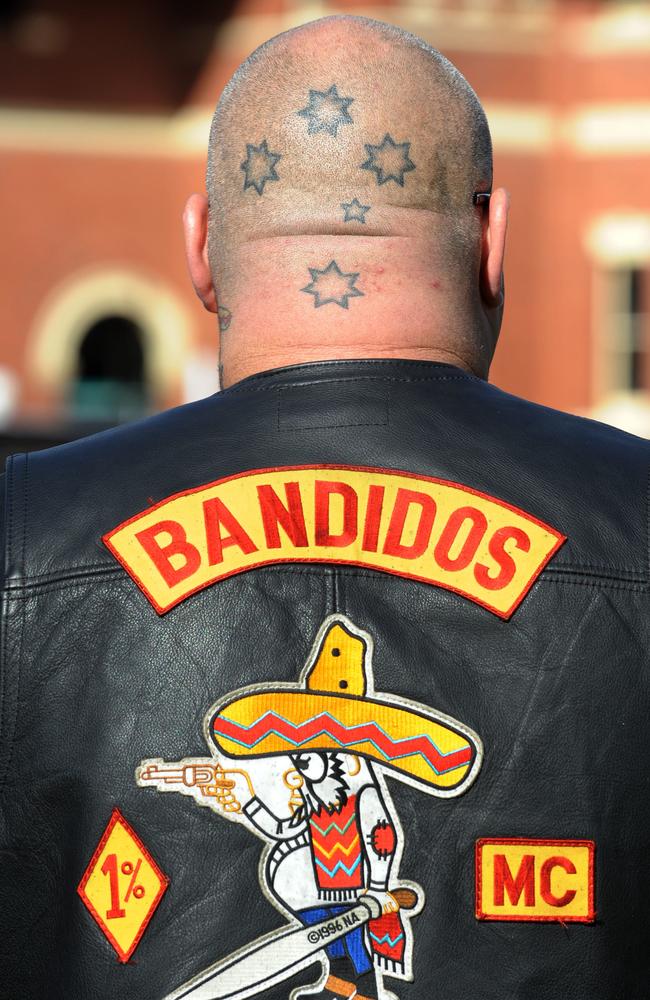
The Bandidos have 53 chapters in Australia and are regarded as one of the biggest clubs nationwide.
The club has affiliate chapters in Thailand and Vietnam. The Bandidos president “el presidente” “Big” Tony Vartiainen celebrated his anniversary with the club in July.
The club’s colours are red and gold.
5. Finks
Known for its tight secrecy, the club has been a recent focus of the NSW Police Raptor Squad.
Formed in 1969 in Adelaide, the club expanded to Perth in 2008 after expelled Coffin Cheaters member Troy Mercanti joined forces with South Australian member Frank Condo.
The club is governed by “world president” Sione Hokafonu, and is known for its tight secrecy.
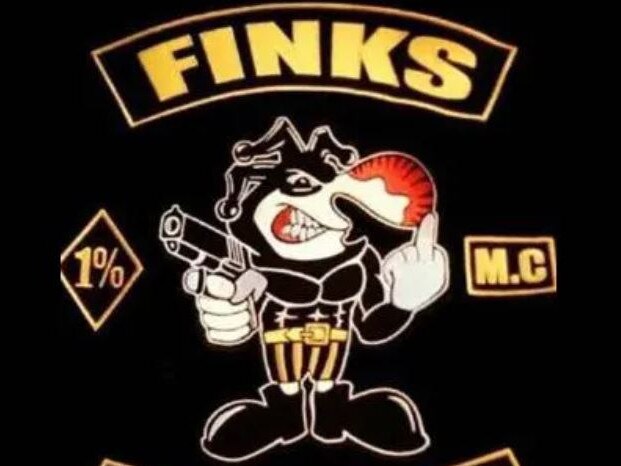
The club, which is believed to have at least seven chapters, has been a recent focus of the NSW Police Raptor Squad.
The club are strong allies of the Comanchero and rivals of the Coffin Cheaters. It is understood most Finks members patched over to the Mongols MC in 2013.
6. Lone Wolf
Has more than a dozen chapters throughout the country with a strong presence in NSW and Queensland. High-profile members include Hassan Kalache and Erkan Keskin (deceased).
Formed in Australia in 1971, the club has more than a dozen chapters throughout Australia including a strong presence in NSW where they have many connections on the mid and north coast, and Queensland.
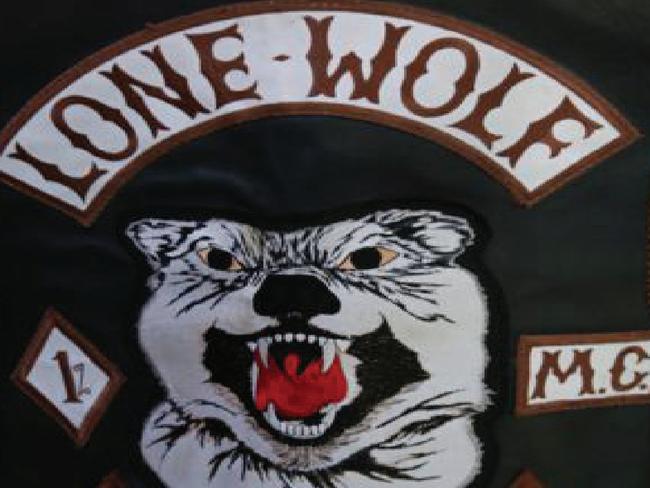
The club is said to have many Pacific Islander and Middle Eastern members in over eight chapters across the country.
The club’s major rival is the Rebels.
7. Nomads
Has expanded across all states in territories in Australia, keeping a lower profile more recently. High-profile members and ex-members include Sleiman Tajjour and Moudi Tajjour (ex-member).
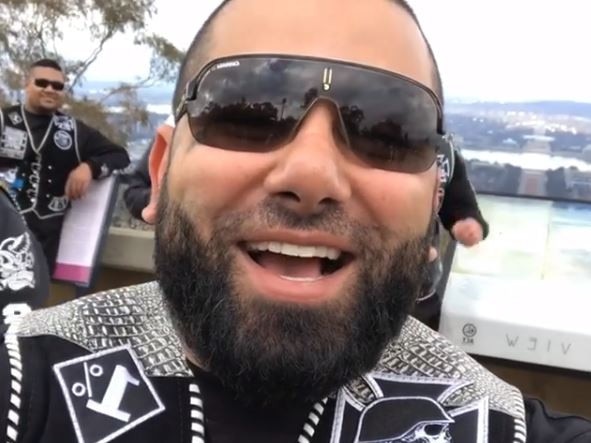
Formed in 1968 in Newcastle, the club has since expanded to have at least 12 chapters across all states and territories nationwide.
In 2009 the then-national president Scott Orrock patched over to the Hells Angels, sparking a feud between the groups.
8. Mongols
Saw rapid growth since their Australian inception in the 1970s and at one stage regarded as the most violent gang worldwide. High-profile members include Toby Mitchell (ex boss).
Referred to worldwide as the Mongols Nation, the club was formed in California in 1969 as a Hispanic rival to Hells Angels.
The club expanded to Australia in the 1970s, with its membership quickly growing to over 300 members, in a move that stunned authorities.
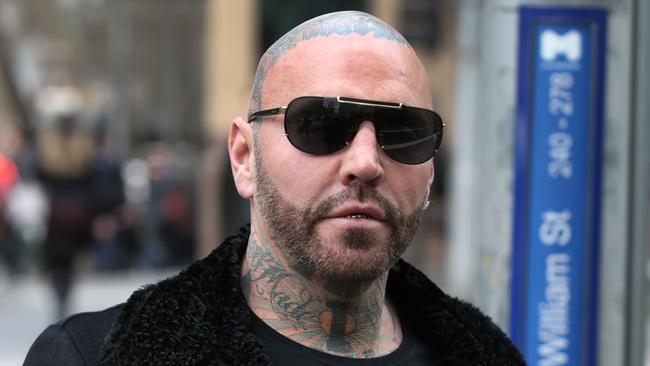
The club is said to have chapters in 14 states across the globe and a presence in 11 countries. The club’s major rival is the Hells Angels.
A recruitment drive in the second half of 2022 led to an increase in the club’s membership figures in Melbourne.
The club’s national president is Nick ‘The Knife’ Forbes and its national sergeant-at-arms is Phil Main.
9. Gypsy Joker
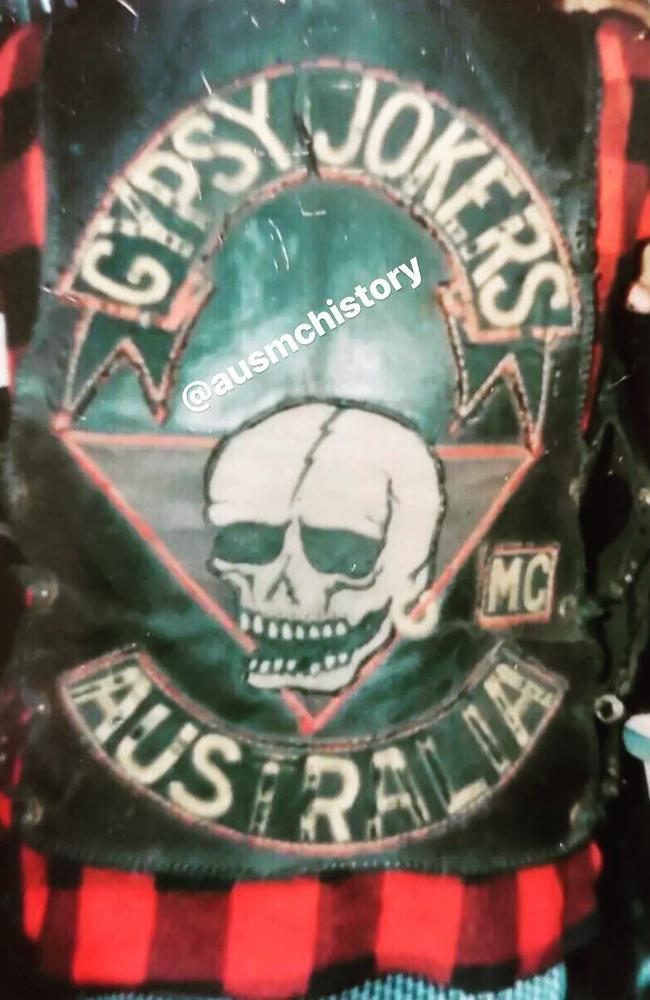
Said to be one of the most difficult to become a member of and referred to as “one of the world’s most feared bikie gangs.”
Formed in San Bernardino, California in April 1956, the “one-percenter” club expanded to include chapters in Norway, Germany and South Africa before arriving in Australia in November 1969.
The first chapter was set up in Sydney by president Phil ‘Ugly’ Mawson, with more chapters forming in Western Australia in 1971.
The club is said to be made up of former members of the St Mary’s Motorcycle Club in Sydney’s west.
10. Coffin Cheaters
Regarded as the first Australian motorcycle gang to expand overseas, the Perth born club was founded in 1970.
In 1999 the Western Australia based club joined forces with a Victorian motorcycle club also named Coffin Cheaters and together they “patched over” the Forbidden Few MC and Wizard MC in Norway in 2004 and 2005.
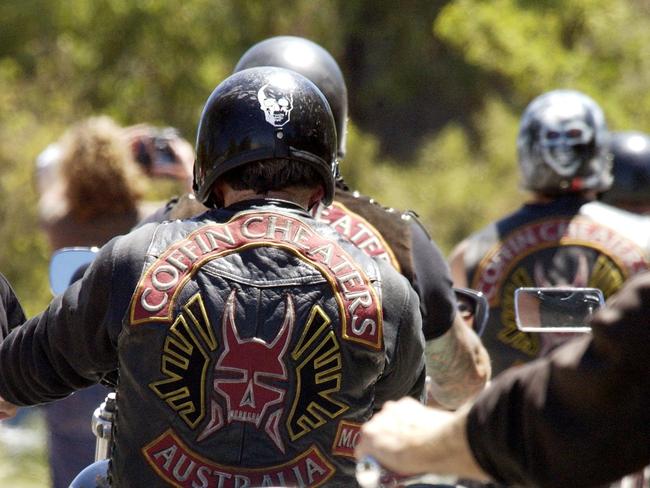
The Coffin Cheaters colours are red and gold and their clubhouse is said to be in Western Australia.
It is understood the Finks MC are rivals of the Coffin Cheaters and the Hells Angels are allies.
There have been at least seven reported known chapters of the Coffin Cheaters.
The 28 other gangs
Black Uhlans Australia
Believed to have been formed in the 1970s by 10 ex-members of the Fourth Reich MC, the club, which has eight chapters in Australia, uses the acronym B.U. F. F. B. U which stands for Black Uhlans Forever, Forever Black Uhlans. The Black Uhlans are said to be based in Queensland and described as one of the more volatile and unstable groups with a penchant for weapon stockpiles; particularly strong in Queensland and Victoria. Steven Hooker (not the Olympian) is believed to be the “national life president” of the club.
Bros
Uses the motto Brothers Forever Forever Brothers or just FBBF. Has run campaigns to unite 1 percenters against legislation outlawing their operations and prides itself on being a new club with old school rules.
Club Deroes Perth
Formed in Perth Western Australia in 1971, currently believed to have two chapters in Perth and Kalgoorlie, with headquarters in Cloverdale. Joined forces with three other Perth-based OMCGs – the Coffin Cheaters, Gypsy Jokers, Gods Garbage – to push out the New Zealand-based Mongrel Mob who wanted to set up a chapter locally.
Descendants
Founded in 1974 in South Australia by brothers Tom and Perry Mackie after they arrived in Australia from New Zealand. The brothers lost a Federal Court appeal against their deportation from Australia in July 2022.
Devil’s Henchmen Tasmania
Formed in Tasmania in 1970,members deny they are part of an “organised crime group”. The club’s headquarters were in Timaru in New Zealand but are reported to have been taken over by the Rebels. In a submission to Tasmania Police in 2018, member Andrew Murphy wrote they “have never and will never identify ourselves as ‘one per centers’”. “The Devil’s Henchmen Motorcycle Club do not consider ourselves to be a ‘gang’,” he continued.
Diablos Australia
The club first formed in San Bernardino California in 1961 before expanding to form a chapter in Pattaya Thailand in 1999 and Australia in 2014. They are now believed to have 12 chapters worldwide and are a support club for the Bandidos. The club’s colours are red and gold.
Foolish Few Melbourne
Believed to have been established in Coburg Victoria, the club is known largely only in Melbourne. The Foolish Few claims to be a social club but authorities think otherwise.
Fourth Reich
Formed in 1974 as a brother club of the Gypsy Jokers and made up largely of veterans of the Vietnam War. Ten members from its Wollongong base moved to Queensland to start a new club affiliated with the Black Uhlans. The clubs are still aligned. In 2018, police attached to Strike Force Raptor raided the Fourth Reich clubhouse in Albion Park and seized drugs.
Gladiators Australia
Formed in 1960 in Maitland with three chapters in Australia including Grafton, Gunnedah and Gunnedah, Gladiators Australia are believed to be one of the oldest clubs established in Australia. The club is said to have been born out of the motorcycle speedway scene in NSW before the tribal biker group moved into outlaw gang status. The club’s last known president is Frank Van Der Kroft, who was shot at North Rothbury in the Hunter Valley in 2012.
Gods Garbage
Established and based in Western Australia in Albany and Mandurah areas, Gods Garbage is considered one of the “big four” of clubs in the state since the 1970s and 1980s alongside Coffin Cheaters, Gypsy Jokers and Club Deroes.
Highway 61
Originally formed and based in Auckland New Zealand, the club has mainly Maori and Pacific Islander members. The club reportedly expanded to Australia in 1984 before cementing a chapter in Brisbane in 1998. The club’s colours are black and gold.
Highwaymen
Formed in 1954 in Detroit Michigan, the club is said to be all about loyalty and mandatory member meetings, with mottos and sayings declaring how tough and scary they are who fear no-one. The club has military veterans in their ranks and are a rival of the Outlaws.
The Huns MC
Known to be in Melbourne and not believed to be directly involved in criminality but in the past police have claimed was susceptible to being targeted by other larger guns to procure guns and ammunition.
Immortals Australia
Formed in 1971 in Melbourne, Immortals Australia are described as an “old school club without school values”. The club is based in Bayswater and has chapters across Melbourne’s east. The club’s colours are green and gold.
Iron Horsemen Australia
Formed in Ohio in the mid-1960s, the club has reportedly expanded to Australia with chapters in Melbourne and Queensland and among groups declared criminal organisations by the Queensland Newman Government in 2013. In 2022, three alleged members of the bikie gang were charged over a violent assault at a popular Gold Coast cafe. The club’s motto is “Ashes to ashes, dust to dust, if it weren’t for the Iron Horsemen, the highways would rust”.
Life and Death
Formed by “Dr Bob” in 1973 in Hawkesbury in the northwest of Sydney, Life and Death is described as “an old school club.” In February, two men with links to the Life and Death Outlaw Motorcycle Gang were charged in relation to a three-month investigation into alleged methylamphetamine supply in Sydney’s west.
Mobshitters Australia
Founded in 1970 in Hurstville in Sydney’s south, the small “one-percenter” club is said to be closely associated with the Bandidos and rivals of the Comanchero. The club expanded to Victoria and South Australia in the late 1970s before patching over to the Rebels in 1991. The club was present at the Milperra Massacre in 1984.
Odin’s Warriors Australia
The Brisbane chapter was formed in 1971 primarily by military veterans with the gang’s central clubhouse shut down in Queensland in 2022 as part of tough anti-biker laws. In 1997 six people suffered gunshot wounds when 85 warring Outlaws and Odin’s Warriors went to war in Mackay. The club has stated it is “not a criminal organisation”.
Outcasts Australia
Formed in Sydney in 1969, the small club has become a recent public supporter of the four big clubs including Hells Angels, while attempting to keep a low profile.
Outlaws Australia
Formed in Illinois in 1935, the club has since expanded to have over 5,000 members worldwide and 416 chapters in 41 countries including its Australian chapters which emerged from 1994. They are said to have a small presence in Western Sydney. Their skull motif is known as Charlie and the members are in permanent stand-off with Hells Angels and Odin’s Warriors.
Phoenix Sydney
There is little information about the club as a result of its low profile. Not to be confused with the legal Phoenix Motorcycle Club who promote “sane, sober and safe motorcycyling”.
Red Devils
Regards as a supporter and feeder club for the Hells Angels. The club has chapters across Europe and Australia, China and Turkey.
Renegades Queensland
Formed in Brisbane in the 1970s, the club now has chapters in Cairns, Mackay, Redcliffe and Townsville. The club was once in a territorial war with Gypsy Jokers and Odin’s Warriors in the late 1990s.
Rockmachine 1% MC
Formed in Canada in 1986, the club has since grown to have 11 chapters in Australia. The club was formed from an alliance of affiliates in opposition to the Hells Angels. The club supports the “To the Life Until Death” motto.
Satan’s Riders Launceston
Formed in the 1980s the club came to prominence in 2016 when the Bandidos attempted to set up drug operations in their patch and that of the Rebels and Devil’s Henchmen.
Satadurah Australia
Formed in the Netherlands in 1990, the gang – mostly made up of Indonesian migrant workers – expanded to Sydney, and south east Queensland in 2015. By 2019, the club had established chapters in all states largely through disaffected members of other gangs and Pacific Islanders, Dutch and Eastern Europeans. Its name means “one-blood” in Malay.
Vigilanties
Formed in Melbourne in the 1950s, the club are not considered 1 per centers but are a structured group. They are said to have close associations with the Vikings, Black Uhlans and Hells Angels.
Vikings
The club’s members maintain they are a group of social riders, but authorities had previously accused them of being a “puppet club” for the Hells Angels. Not to be confused with the completely legal Viking Group of licensed clubs.

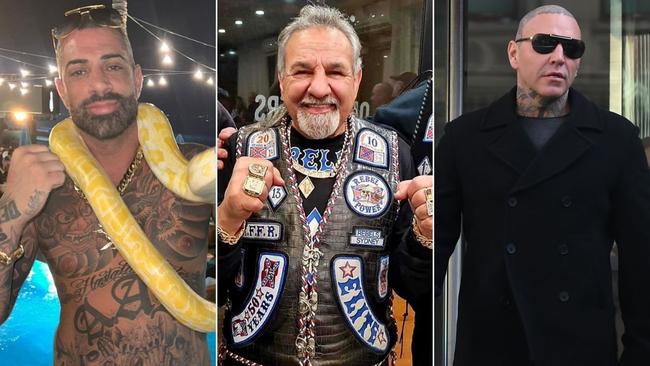
Everyday heroes: Regional NSW residents land Oz Day honours
Not all heroes wear capes – and it couldn’t be more true for these everyday champions from Regional New South Wales who have been honoured this Australia Day. See the full list.
Sydney’s dating problem: It’s not just you
The Daily Telegraph’s exclusive new series, ‘Heartbreak Harbour’, reveals just how tough the quest for love is in Sydney right now.